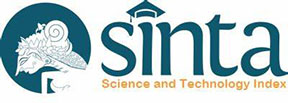KARAKTERISTIK TANAH DAN PERBANDINGAN PRODUKSI KELAPA SAWIT (Elaeis guineensis Jacq.) DENGAN METODE TANAM LUBANG BESAR DAN PARIT DRAINASE 2:1 PADA LAHAN SPODOSOL DI KABUPATEN BARITO TIMUR PROPINSI KALIMANTAN TENGAH - INDONESIA
DOI:
https://doi.org/10.32734/jopt.v2i2.2897Keywords:
Spodosol, Typic Placorthod, big hole, drain, fresh fruit bunches, hardpan, placic, ortstein, spodosol, Typic placorthod, big hole, drain, fresh fruit bunches, hardpan, placic, ortsteinAbstract
Spodosol soil of Typic Placorthod sub-group of East Barito District is one of the problem soils with the presence of hardpan layer, low fertility, low water holding capacity, acid reaction and it is not suitable for oil palm cultivation without any properly specific management of land preparation and implemented best agronomic practices. A study was carried out to evaluate the soil characteristic of a big hole (A profile) and no big hole (B profile) system and comparative oil palm productivity among two planting systems. This study was conducted in Spodosol soil at oil palm plantation (coordinate X = 0281843 and Y = 9764116), East Barito District, Central Kalimantan Province on February 2014, by surveying of placic and ortstein depth and observing soil texture and chemical properties of 2 (two) oil palm's soil profiles that have been planted in five years. Big hole system of commercial oil palm field planting on the Spodosol soil area was designed for the specific purpose of minimizing the potential of a negative effect of shallow effective planting depth for oil palms growing due to the hardpan layer (placic and ortstein) presence as deep as 0.25 - 0.50 m. The big hole system is a planting hole type which was vertical-sided with 2.00 m x 1.50 m on top and bottom side and 3.00 m depth meanwhile the 2:1 drain was vertical-sided also with 1.50 m depth and 300 m length. Oil palm production was recorded from the year 2012 up to 2014. Results indicated that the fractions both big hole profile (A profile) and no big hole profile (B profile) were dominated by sands ranged from 60% to 92% and the highest sands content of non-big hole soil profile were found in A and E horizons (92%). Better distribution of sand and clay fractions content in between layers of big hole soil profiles of A profile sample is more uniform compared to the B profile sample. The mechanical holing and material mixing of soil materials of A soil profile among the upper and lower horizons i.e. A, E, B and C horizons before planting that resulted a better distribution of both soil texture (sands and clay) and chemical properties such as acidity value (pH), C-organic, N, C/N ratio, CEC, P-available and Exchangeable Bases. Investigation showed that exchangeable cations (Ca, Mg, K), were very low in soil layers (A profile) and horizons (B profile) investigated. The low exchangeable cations due to highly leached of bases to the lower layers and horizons. Besides, the palm which was planted on the big hole system showed good adaptation and response positively by growing well of tertiary and quaternary roots that the roots were penetrable into deeper rooting zone as much as >1.00 m depth. The roots can grow well and penetrate much deeper in A profile compared to the undisturbed hardpan layer (B profile). The FFB (fresh fruit bunches) production of the non-big hole block was higher than the big hole block for the first three years of production. This might be due to the high variation of monthly rainfall in-between years of observation from 2009 to 2014. Therefore, the hardness of placic and ortstein as unpenetrable agents by roots and water to prevent water loss and retain the water in the rhizosphere especially in the drier weather. In the high rainfall condition, the 2:1 drain to prevent water saturation in the oil palm rhizosphere by moving some water into the drain. Meanwhile, the disturbed soil horizon (big hole area) was drier than un disturbance immediately due to water removal to deeper layers. We concluded that both big hole and 2:1 drain are a suitable technology for Spodosol soil land especially in preparing palms planting to minimize the negative effect of the hardpan layer for oil palm growth.






















